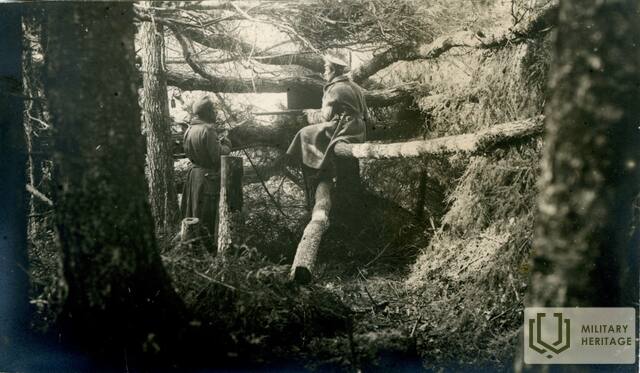The Battle of Schmarden I World War I

After the unsuccessful July attack near Kekava, the leadership of the Russian 12th Army immediately began preparing a combat operation for the invasion of Courland. The strike would take place in two directions — near Roja, an infantry and cavalry landing force would be launched from 12 transport ships, which would be guarded by ships of the Baltic Fleet. Then these soldiers would immediately head to Tukums, while at the same time a frontal attack on German defensive positions would begin near Smārde. Unlike Death Island and the positions in the Kekava-Olaine area, near Smārde the two opponents were separated by a wide “neutral zone” – a territory several kilometers wide, not occupied by either side. To overcome it and occupy the enemy positions, the Russian command assigned considerable forces – 37 infantry battalions and 138 guns, as well as an armored train.
Of these forces, five were Latvian rifle battalions (2nd, 4th, 5th, 7th, 8th battalions), which for the first time were combined into a brigade under the command of Colonel Andrejs Auzāns to carry out a tactical task. During the summer, two additional companies and two teams – grenadiers and bombers – were included in the Latvian battalions. Consequently, the numerical composition of the battalions increased significantly and they were already approaching the German infantry regiments in terms of numbers. The Latvian riflemen had gained valuable combat experience in previous battles and had earned the recognition of the command. In total, 32 infantry battalions, five Latvian rifle battalions, 144 guns and an armored train were assigned to the Smārde offensive operation. If the front were to be broken through, five cavalry regiments with several armored vehicles would go forward from the reserve. The German army positions here included reinforced units of the 29th Landeswehr Brigade with a strong artillery group. A German seaplane unit was deployed on Lake Engure, and the Gulf of Riga was controlled by the Russian Navy. In Courland itself, the long sea coast was protected by small German forces — mainly cavalry and Landsturm or Land Guard companies.
The first stage of the Smārde operation in the forested and swampy area began on August 5, when Latvian rifle battalions began reconnaissance in the Smārde tavern area. Latvian battalions gradually began to advance into the “neutral” zone between the German and Russian positions, building fortifications and supply routes to prepare a bridgehead for the upcoming main attack. This was very difficult to do in the swampy area. The largest supply route, which the riflemen had built with hard work, was called the “Latvian Road”. The Latvian riflemen, together with Russian units, overcame fierce German resistance and occupied most of the neutral zone by August 30. Thus, the first stage of the operation planned by the Russian command was completed. However, the continuation did not follow - the army leadership decided to cancel both the risky landing operation and the ground attack in the direction of Tukums. The losses suffered by the Latvian riflemen in the several weeks of fighting in the swamps and forests of Smārde (about 50 soldiers fell, more than 250 officers, non-commissioned officers and riflemen were knocked out of the ranks, they were sent to hospitals for treatment) turned out to be in vain. Aleksandrs Grīns also participated in the Smārde battles, who from August 20 fought as part of the 1st Company of the 4th Vidzeme Latvian Riflemen Regiment.
More information sources
http://latviesustrelniekusaraksts.lv/Kaujas_darbiba/Book_5.html
https://www.dveseluputenis.lv/lv/laika-skala/notikums/83/sakas-smardes-kaujas/
Related timeline
Related objects
Monument in the memory of Finnish jaegers-sappers
Located in Engure municipality, on the side of the A10 highway near the Smārde tavern.
The memorial is located in the field opposite the Smårde pub, where the Battle of Smårde took place in 1916 during World War I. A Finnish Jaeger engineer company (~200 men) participated in the fighting as part of the German army. "Smårde Day" has become the official holiday of the military engineers of the Finnish army, which is still celebrated today.
The Finnish Jaegers were a unit of the German Army formed during World War I. They consisted mainly of nationally minded Finnish volunteers from the Russian Empire and Finland. The Battle of Smårde was one of the most significant offensive battles of the Finnish Jaegers, where new tactics were used at the time.
A month after this event, the Russian army attacked the German army near Smārde. Latvian combat units conducted reconnaissance of the Smārde area, built a supply road “Latvian Road” across the swamp, and participated in the fighting. About 300 Latvian fighters fell in the battles. Like the Finnish jaegers in the German army, the Latvian riflemen in the Russian army were the founders of their own national states and armies.





